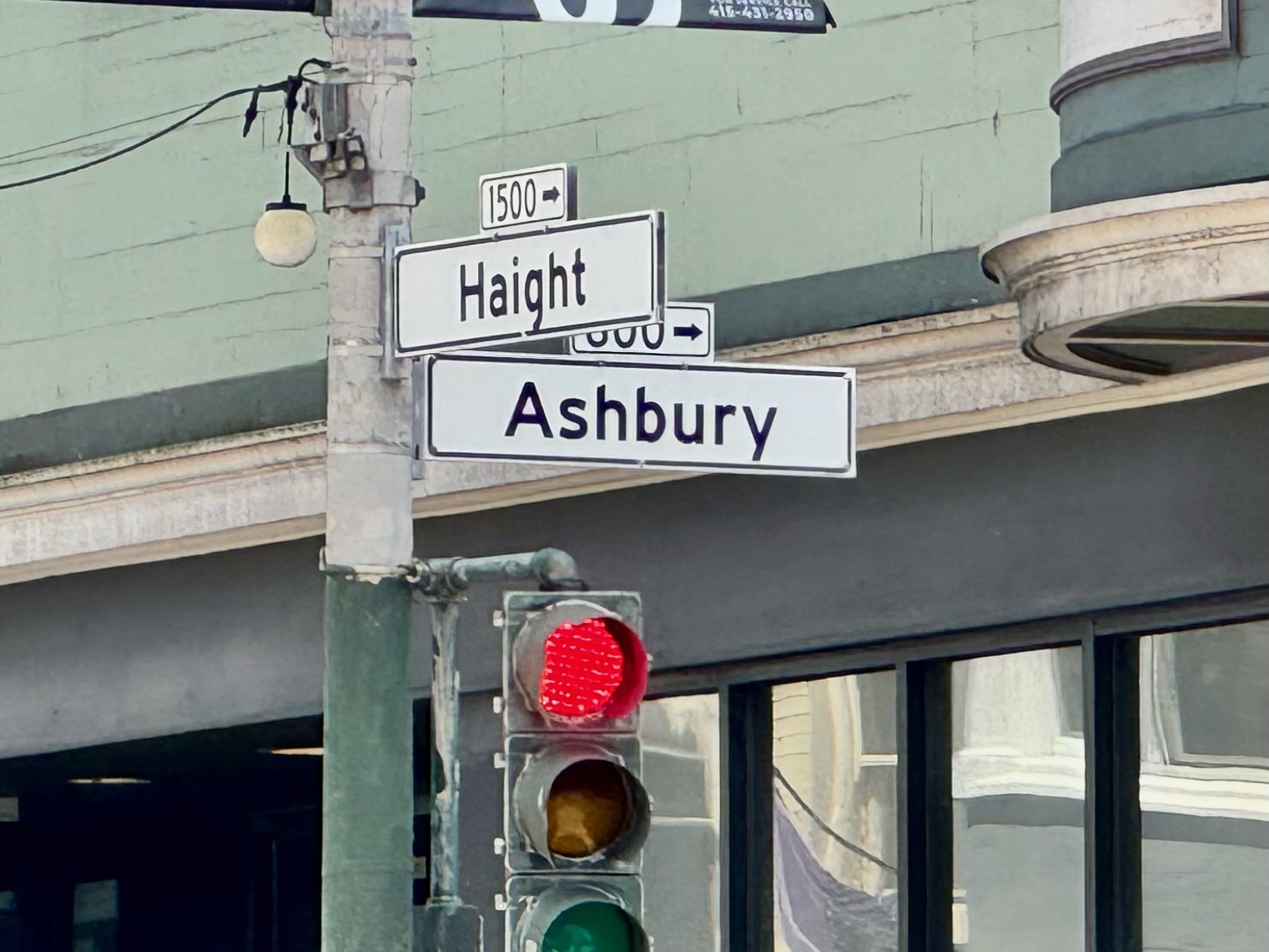
May 11th, we arrived in San Francisco.

With a population of over 827,000 SF is the 4th largest city in California, 17th largest in the United States, and among US cities with a population over 250,000 San Francisco ranks first in the US by per capita income. Prices, especially in real estate and dining, certainly reflected this. We paid $20 for two ice cream cones at a Ben and Jerry’s located in the Castro District where an ordinary looking 3-bedroom flat was advertised for sale at over 4 million dollars.

Simple breakfast for two (eggs Benedict, eggs with waffle, one tea, no juice or coffee) was consistently at or north of $60.
Unlike Chicago, we did not have pre-arranged activities. We knew generally what we wanted our 4 days to include: a Bay cruise, Fisherman’s Wharf, Haight-Ashbury, The Castro, China Town, Cable Cars, and some fine dining. Alcatraz was a “no”, been there, done it, and glad we did. Perhaps it would have been on the list if we had a 5th day.
Our hotel room was terrific! Located at the corner to China Town, it was a block from the cable cars, the financial district and Union Square shopping.

We were on the 8th floor. An enormous room, equally spacious bathroom, and best of all an expansive private balcony. The balcony would have received more attention from us but for the cool temperatures we experienced, daytime highs in the 60’s and nighttime lows in the 50’s). Thankfully it did not rain during our stay.



Dining: Morning breakfasts were pricey. We did not dine at the hotel, choosing instead a variety of pleasant morning eateries.

Each evening we chose well regarded restaurants. Notable was John’s Grill where I ordered the house specialty, “Sam Spade’s Lamb Chops”, made famous by Humphry Bogart in “The Maltese Falcon”. Jazz garnished our excellent dinner.




Lunches were unplanned. We seized opportunity where we could: Chowder at the wharfs, and a delightful surprise in the form of a very authentic Irish Pub located in an alley across from our hotel.


Since our hotel was literally at the corner of China Town, strolling its streets and visiting its shops was a first day order of business.


On our last night we dined in one of its most popular restaurants, the R & G Lounge. Always packed with locals and out-of-towners, we were fortunate to score a reservation.

One day we rode the street cars (as distinguished from San Francisco’s 19th Century cable cars) to Haight-Ashbury and The Castro.

These street cars, creatures of the mid-Twentieth Century, are tethered to overhead electric lines. Each car is dedicated to the ghosts of like historic services in other US cities, among them Cleveland, Detroit, and Kansas City.

Haight-Ashbury still seeks to embrace its psychedelic/counterculture history and proudly points to the haunts of famous luminaries.

This was once the home of Janice Joplin.

However, with the legalization of cannabis in California and 38 other States the “naughty weed” reputation of Haight Ashbury is more past than present.

“The Castro” has its own vibe.

This neighborhood of charming (expensive!) homes and themed shops became a LGBTQ refuge in the mid-Twentieth Century. Its main street features the “LGBTQ Walk of Fame” bronze plaques and displays of pride flags.


The Twin Peaks Tavern was the first gay bar in the US to have plate glass windows where patrons were openly visible to the public (1972).

We spent an afternoon at Fisherman’s Wharf which included a cruise of the bay.




SF has a lower-than-average rate of violent crime, but minutes before we arrived there was a fatal shooting. We passed police officers as they taped off the intersection and erected a CSI tent. The homicide was prominent in that evening’s news, the city’s 11th. The shooter turned himself in to police that afternoon.
At our last visit to SF we were walking the Golden Gate Bridge when not 100 feet in front of us a pedestrian threw himself off the bridge, plunging to his death in the waters below.
The 90-minute Bay cruise provided a pleasant display of the Golden Gate Bridge, Alcatraz, and the skyline, among other sights.




No visit to San Francisco would be complete without a ride on the celebrated 19th Century cable cars.


This system, which dates to 1873, once featured over 23 lines. Today only 3 lines remain, more as a tourist attraction than as a public conveyance.



To our surprise the highlight of our 4 days was not any of the above attractions, but rides in taxi cabs. These were not ordinary cabs but rather Waymo’s self-driving Jaguar cabs. They were EVERYWHERE!

The experience was both ordinary and surreal. You download the Waymo app to your cell phone, and “hale” a cab in the same way that one would with Uber or Lyft. “Strange” begins with the car pulling up to the curb. It displays your initials electronically on the roof to let you know that this is your cab. You use your cell phone to unlock the door and enter the cab. You can put luggage in the trunk (no cabbie to help) and I understand that the cab will not drive off without allowing you to retrieve your bags. We did not test this feature.
A human voice welcomes you and instructs passengers to fasten seatbelts, then you are off. To the uninitiated it is weird. Our “Driver-Les”, (pun intended) is polite and invisible. “He” obeys all traffic laws and navigates the challenges of congested urban traffic with expertise. “He” is patient, never sounding the horn at distracted drivers although a human would likely have. Pedestrians, emergency vehicles, obstructions, pose no difficulty. We, on the other hand, don’t know how to act. We found ourselves uncharacteristically quiet, as if there were a driver present. We gaped at the steering wheel moving of its own accord. Occasionally we would quietly laugh, noting the contradictions of rearview mirrors, driver seatbelt and cupholder.

The cost was approximately what one would expect for any cab ride. It was a real bargain when we factored in the entertainment value. We rode several times, would do so again, and recommend it. Waymo does not drive to the airport.
Here is a video of our Waymo experience:
Our flight home on May 15th was the low point of the entire 10 days. En route to the airport we learned that our outgoing flight was delayed and we would miss our connection in Salt Lake City. At the airport Delta staff rebooked us through Seattle, but with a 6-hour delay and in coach, not the first class we had paid for. We arrived in Kansas City past 11 p.m. where our daughter waited for us at the airport. It was after midnight when we entered our home, 17 hours after we awoke that morning. And we had 9 a.m. appointments in the morning… Brutal. The entire journey, Exhilarating!
Peace Everyone. Pete





























































































































